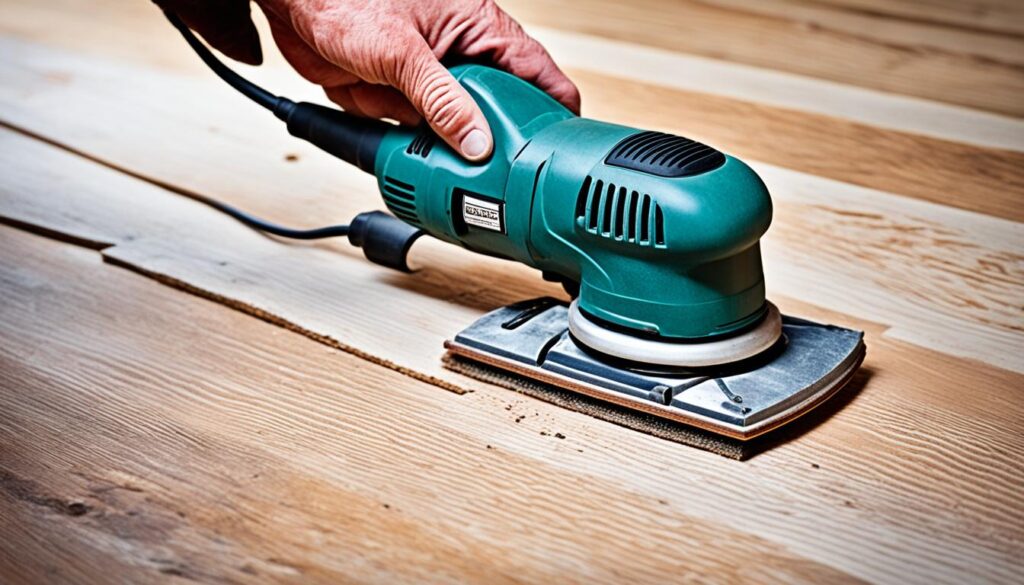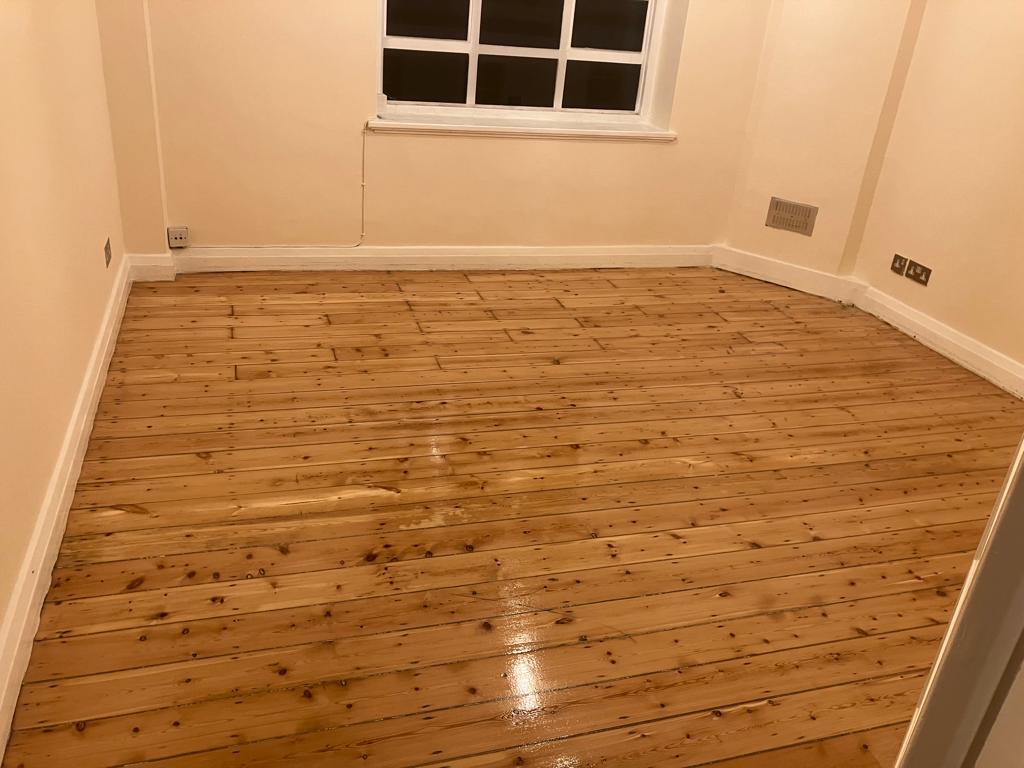If you have leftover hardwood flooring from a renovation project, don’t let it go to waste! There are plenty of creative ways to upcycle wood floors and give your home a unique, eco-friendly makeover. In this article, we will explore DIY tips and ideas for repurposing wood flooring scraps. From bench tops to table tops, wall shelves to accent walls, there are endless possibilities to explore.
Key Takeaways:
- Upcycling wood floors is an eco-friendly way to give your home a unique and sustainable renovation.
- Repurposing wood flooring can be done through creating furniture pieces or enhancing home decor.
- Keeping leftover wood flooring ensures a match for future repairs and contributes to sustainability efforts.
- DIY upcycling projects offer endless possibilities to explore and unleash your creativity.
- Get started with your wood floor upcycling project and make a positive impact on your home and the environment.
Repurposing Wood Floors for Furniture
One of the best ways to upcycle wood floors is by using them to create furniture pieces. Hardwood scraps can be transformed into beautiful bench tops, table tops, and even wall shelves. By repurposing these leftover materials, you can create unique and sustainable furniture that adds character to your home. Whether you’re a beginner or an experienced woodworker, there are plenty of furniture projects that can be done using leftover wood flooring.
Repurposing wood floors for furniture not only gives a new life to the materials but also promotes sustainable flooring solutions. By utilizing repurposed wood flooring, you contribute to reducing waste and minimizing the ecological footprint of your home projects.
When it comes to furniture ideas, the possibilities are endless. Here are some creative projects you can try using upcycled hardwood floors:
- 1. Bench tops: Transform leftover wood flooring into sturdy and stylish bench tops for your dining table, entryway, or garden bench. The repurposed wood adds a rustic charm to any space.
- 2. Table tops: Create unique and eye-catching table tops by repurposing wood flooring. Whether it’s a coffee table, dining table, or outdoor patio table, the upcycled hardwood floors add a touch of elegance and sustainability.
- 3. Wall shelves: Use repurposed wood flooring to make functional and decorative wall shelves. The natural variations in the wood grain add texture and warmth to your walls.
Get creative with your furniture projects and let your imagination guide you. Remember to take measurements and plan your designs carefully to ensure a seamless integration of the repurposed wood flooring into your furniture pieces.
“Repurposing wood flooring not only gives a new life to the materials but also promotes sustainable flooring solutions.”
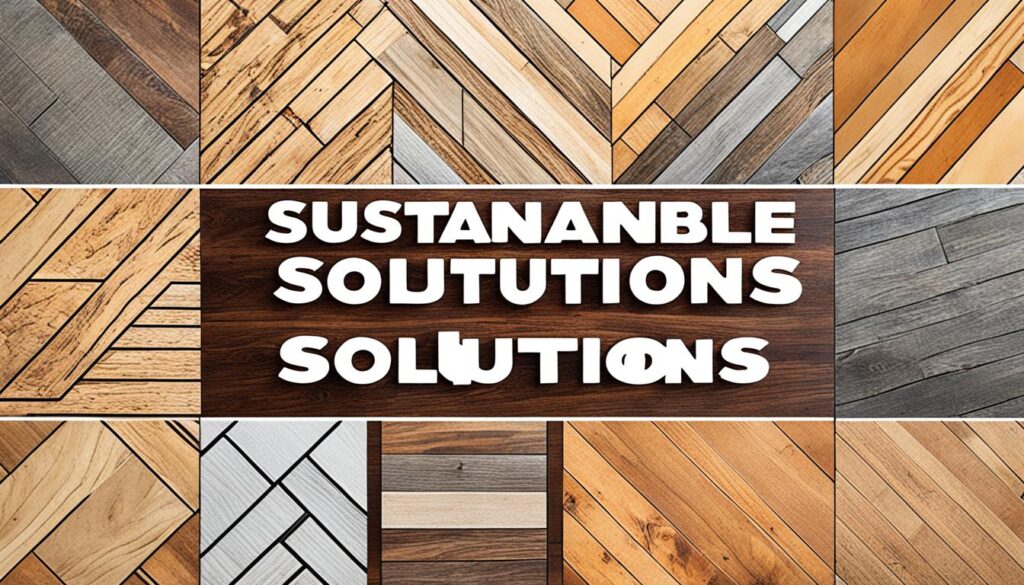
Benefits of Repurposed Wood Flooring for Furniture
The advantages of using repurposed wood flooring for furniture extend beyond sustainability. Here are a few more reasons why repurposing hardwood floors is a great choice:
- 1. Cost savings: Repurposing wood flooring can be a cost-effective alternative to buying new materials for your furniture projects. Instead of spending money on expensive hardwood, you can make use of what you already have.
- 2. Unique character: Repurposed wood flooring adds character and charm to your furniture pieces. Each piece of wood carries its own history and natural beauty, resulting in one-of-a-kind creations.
- 3. Environmental impact: By repurposing wood flooring, you contribute to reducing the need for new resources and minimizing waste. This eco-friendly approach to furniture-making aligns with sustainable practices and helps protect the environment.
When repurposing wood flooring for furniture, it’s important to properly clean and prepare the materials before starting your projects. Sanding, staining, and sealing the wood can enhance its appearance and durability.
With repurposed wood flooring as your building material, you can create furniture that not only meets your functional needs but also reflects your commitment to sustainability.
| Advantages of Repurposed Wood Flooring for Furniture | Description |
|---|---|
| Cost savings | Using leftover wood flooring scraps can save you money compared to buying new materials. |
| Unique character | Repurposed wood carries its own history and adds a distinctive touch to furniture pieces. |
| Environmental impact | By repurposing wood flooring, you minimize waste and reduce the need for new resources, promoting a more sustainable approach to furniture-making. |
Using Wood Floors for Home Decor
In addition to furniture, leftover wood flooring can be used to enhance your home decor. The versatility of wood planks allows for endless possibilities in creating unique and eco-friendly home decor pieces. By repurposing wood floors, you can contribute to the trend of eco-friendly floor renovation, embrace recycled wood floor design, and explore innovative floor upcycling techniques.
DIY Wall Shelf
An excellent way to showcase your creativity is by using wood planks to create a DIY wall shelf. With just a few simple steps, you can transform a pile of leftover wood flooring into a functional and stylish storage solution. This eco-friendly approach not only adds character to your space but also helps reduce waste. Take a look at the step-by-step guide below:
- Measure and cut the wood planks to your desired length.
- Sand the edges and surfaces of the planks to ensure a smooth finish.
- Attach brackets or hooks to the back of the planks for easy wall-mounting.
- Mount the shelves on your wall, ensuring they are level and secure.
Laundry Room Counter Top
The laundry room is often a neglected area in terms of decor. However, by repurposing wood flooring, you can create a stunning counter top that not only enhances the aesthetics of your laundry room but also adds functionality. Follow these steps to transform your laundry room:
- Measure and cut the wood planks to fit the dimensions of your laundry room counter.
- Sand the planks to achieve a smooth surface.
- Apply a protective sealant to the wood to prevent water damage.
- Secure the planks to the counter, ensuring they are level and secure.
Coastal Wall Art
If you’re looking to add a touch of coastal charm to your home, consider upcycling wood flooring into coastal wall art. Take old frames and fill them with pieces of wood flooring to create a rustic, beach-inspired wall display. The natural wood tones and textures will complement any coastal-themed decor, adding a unique and personal touch to your space.
Take a look at this visual representation of how wood flooring can be repurposed for home decor:
| Upcycled Wood Floor Decor Ideas | Image |
|---|---|
| DIY Wall Shelf | Coastal Wall Art |
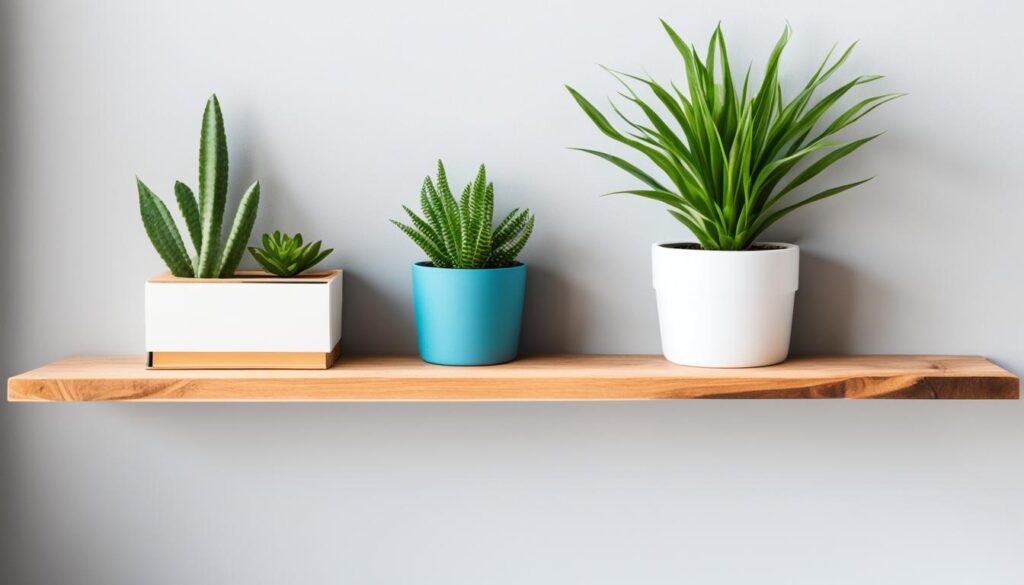
|
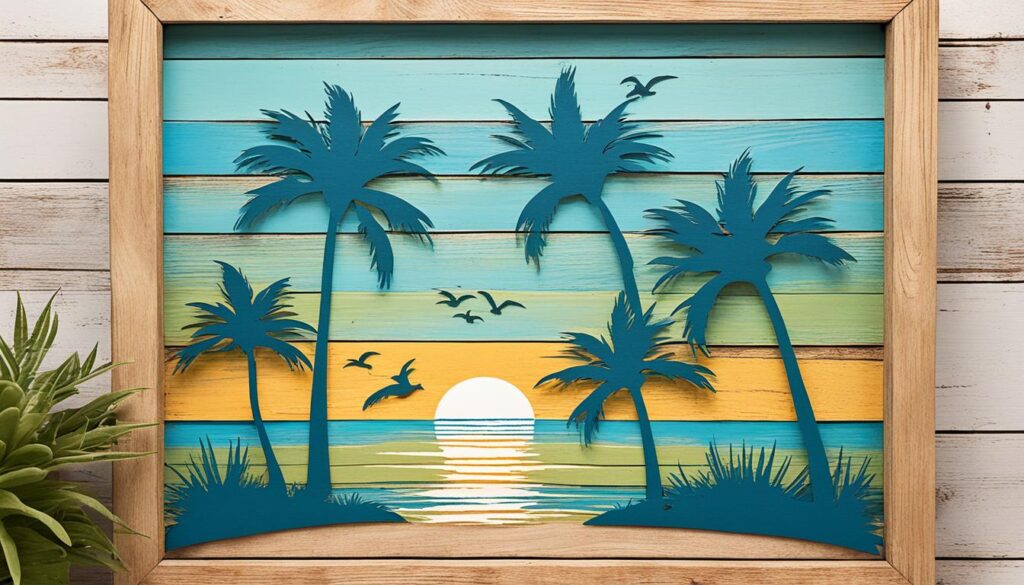
|
By embracing these innovative floor upcycling techniques, you can not only reduce waste but also create a unique and eco-friendly home decor that reflects your personal style. So, don’t let your leftover wood flooring go to waste – get creative and start upcycling!
The Benefits of Keeping Leftover Wood Flooring
While some homeowners may consider returning their leftover wood flooring, there are several benefits to keeping it for future projects.
Firstly, keeping the extra flooring ensures that you have a match in case of any repairs or replacements in the future. Dye lots for wood flooring can vary, and if you need to replace a damaged plank, it may be difficult to find a match.
Secondly, returning the flooring may incur high return shipping costs, making it more cost-effective to keep the materials. By repurposing the wood flooring, you can save on expenses and allocate your budget to other aspects of the renovation project.
By keeping extra wood flooring, you can ensure a match for future repairs and contribute to sustainability efforts.
Lastly, repurposing the wood flooring promotes sustainability and reduces waste, contributing to a more eco-friendly approach to home renovations. Upcycling the leftover wood flooring can be an innovative way to create new furniture pieces or enhance your home decor while reducing the demand for new materials. This not only reduces your carbon footprint but also adds a unique touch to your living space.
Example:
Let’s say you have a 100-square-foot ruby oak wood floor that you decided not to use in your living room renovation. Instead of returning it, you keep it for future projects. A few months later, a heavy object accidentally damages a couple of planks in your study room. Thanks to the stored leftover wood flooring, you have an exact match to replace the damaged planks, ensuring a seamless repair. This prevents the need to purchase new flooring and eliminates the hassle of trying to find a matching dye lot.
In addition to the cost savings and convenience, repurposing wood flooring aligns with sustainability principles. By repurposing and reusing materials instead of disposing of them, you contribute to the reduction in waste that would otherwise end up in landfills. This eco-friendly approach helps conserve natural resources and creates a more sustainable environment for future generations.
Cost Savings Comparison
| Returning | Keeping | |
|---|---|---|
| Return shipping costs | £50 | – |
| Replacement flooring cost | £150 | – |
| Upcycled furniture value | – | £200 |
| Total Cost | £200 | £200 |
As shown in the table above, by keeping the leftover wood flooring and repurposing it into upcycled furniture, you can offset the cost of returning the materials and even create additional value from them. This demonstrates the financial benefits of repurposing wood flooring and the potential for cost savings in your home renovation projects.
By repurposing wood flooring, you not only save money but also contribute to a more sustainable and eco-friendly approach to home renovations. So before returning your leftover wood flooring, consider the benefits of keeping it and explore the creative possibilities that repurposing can offer.
Conclusion
In conclusion, upcycling wood floors is a fantastic way to add creativity and sustainability to your home renovation projects. Instead of letting your leftover wood flooring go to waste, consider repurposing it for various DIY upcycling projects. Whether you’re transforming the wood into furniture pieces like bench tops or table tops, or using it for home decor projects such as wall shelves or Christmas ornaments, the possibilities are endless.
By keeping extra wood flooring, you can ensure a perfect match for future repairs, avoiding the hassle of finding a similar dye lot. This not only saves you money but also promotes a more sustainable approach to home renovations. Repurposing wood floors contributes to reducing waste and supports your eco-friendly efforts.
So, don’t discard your leftover wood flooring. Instead, get creative and start upcycling! Explore the world of DIY upcycling projects and discover the numerous creative wood floor ideas available. Not only will you give your home a unique and personalized touch, but you’ll also make a positive impact on the environment.
